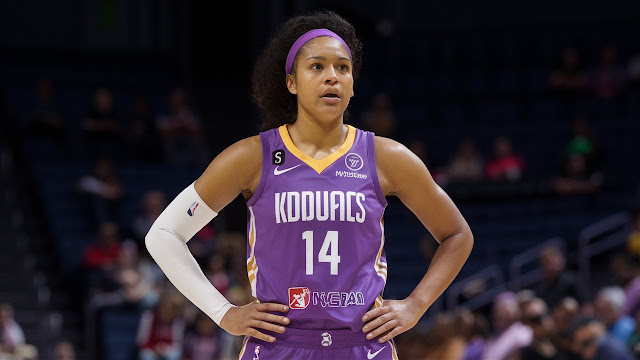Your Guide to the WNBA: From Dunk Dreams to Championship Rings [2024]
Your Guide to the WNBA: From Dunk Dreams to Championship Rings
The world of professional basketball extends far beyond the hardwood courts dominated by the NBA. The Women's National Basketball Association (WNBA) boasts incredible athletes showcasing their skills, athleticism, and strategic prowess. But for those unfamiliar with the league, questions might arise: what is the WNBA, and how does it function?
This guide delves into the exciting world of the WNBA, providing a comprehensive overview for new fans. We'll explore its history, team structure, gameplay, and the phenomenal athletes who grace the court. So, grab your jersey (or soon-to-be favorite team's merch!), and let's dive in!
A Brief History of the WNBA: Paving the Way for Women's Basketball
The WNBA's story begins in 1986, fueled by the growing popularity of women's college basketball. The success of the NCAA Women's Division I Basketball Championship, coupled with Title IX's impact on girls' sports participation, created a fertile ground for a professional league.
Fast forward to 1996, and the WNBA officially tipped off with its inaugural season. Eight teams, each affiliated with an NBA franchise, took to the court. The league has seen its fair share of milestones since then, expanding to 12 teams, introducing innovative initiatives like commissioner's cups, and fostering a platform for social activism.
The WNBA continues to evolve, attracting top international talent and establishing itself as a premier league for women's basketball.
You Can Also Visit This: WNBA.
Screenshot:
WNBA Teams: Finding Your New Favorite.
Similar to the NBA, the WNBA is comprised of 12 teams spread across the United States. Each franchise operates with a single-entity structure, meaning that the team and its players are one entity owned by the same organization. This structure differs from the NBA's player-owned team model.
Here's a breakdown of the WNBA's conferences:
- Eastern Conference: Atlanta Dream, Chicago Sky, Connecticut Sun, Indiana Fever, New York Liberty, Washington Mystics
- Western Conference: Dallas Wings, Las Vegas Aces, Minnesota Lynx, Phoenix Mercury, Seattle Storm, Los Angeles Sparks
Many WNBA teams share arenas with their NBA counterparts, fostering a strong sense of community and shared passion for basketball.
WNBA Gameplay: Fast Paced and Full of Excitement
The WNBA season typically runs from May to September, culminating in a thrilling playoff series that determines the championship team. The gameplay itself mirrors the NBA's format, with four quarters of ten minutes each. However, there are a few key differences:
- Three-Point Line: The WNBA's three-point line is slightly closer to the basket compared to the NBA, making it an even more potent offensive weapon.
- Fouls and Free Throws: Free throws are awarded for one point in the WNBA, as opposed to two or three in the NBA depending on the foul situation.
- Timeouts: WNBA teams have fewer timeouts than their NBA counterparts, emphasizing a fast-paced and strategic approach to the game.
The WNBA is known for its skilled ball handling, defensive intensity, and an emphasis on teamwork. Players showcase exceptional athleticism, executing alley-oop passes, powerful dunks, and dazzling crossover moves.
The Faces of the WNBA: Star Players and Rising Talent
The WNBA is a league brimming with phenomenal athletes. Here are just a few of the iconic names who have graced the court:
- Lisa Leslie: Often referred to as the "Michael Jordan of women's basketball," Leslie dominated the paint with her power and finesse.
- Sue Bird: A veteran point guard known for her leadership and clutch playmaking abilities, Bird is a multiple-time WNBA champion.
- Breanna Stewart: A two-way force, Stewart is a dominant scorer and a defensive powerhouse.
- A'ja Wilson: This young star is already making waves with her rebounding prowess and offensive versatility.
These are just a few examples. The WNBA boasts a diverse pool of talent, with international players and rising stars constantly pushing the boundaries of the game.
Beyond the Court: The WNBA's Impact on Social Issues
The WNBA has consistently used its platform to advocate for social justice. Players have spoken out against racial injustice, gender inequality, and voter suppression.
The league itself has implemented initiatives like the WNBA Changemakers program, which highlights the social activism efforts of its players. This commitment to social change is a defining characteristic of the WNBA, making it a league that stands for more than just basketball.
Getting Involved: How to Support the WNBA
The best way to experience the excitement of the WNBA is to catch a game live! The electric atmosphere






Comments
Post a Comment